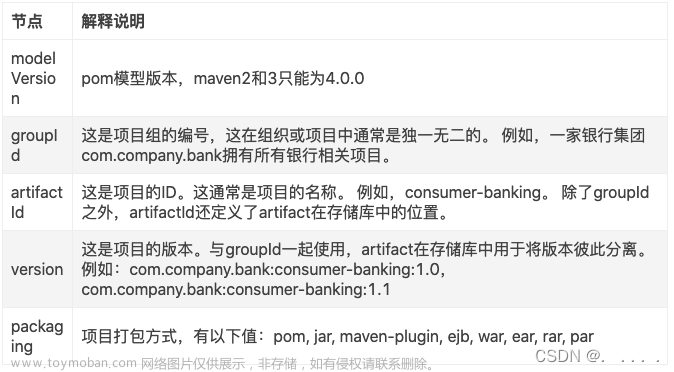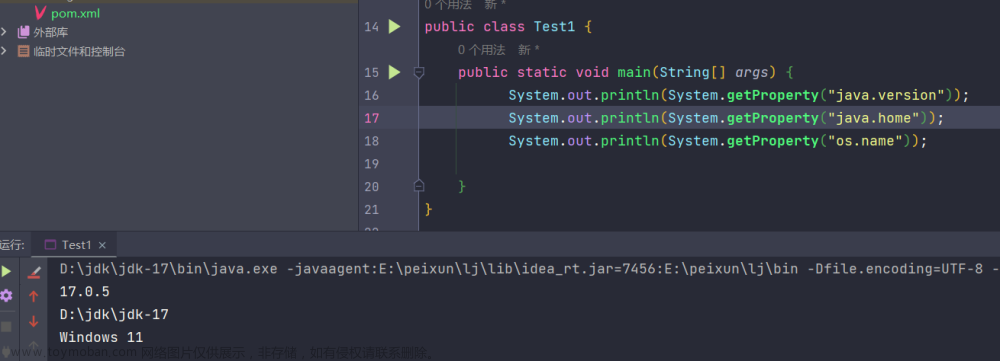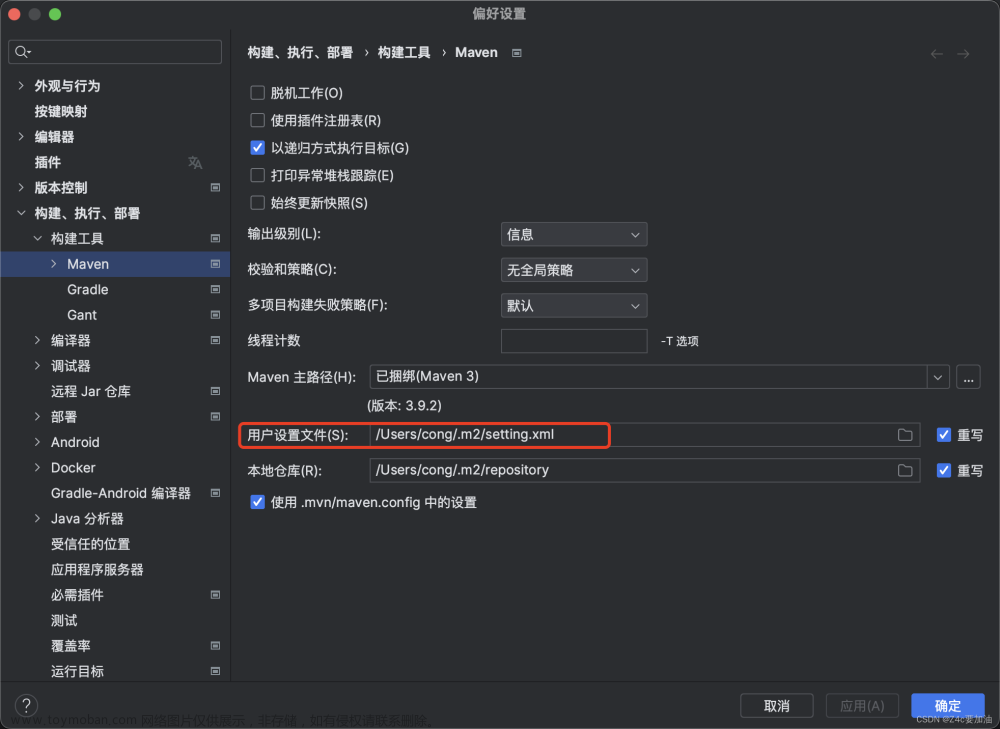一、settings.xml配置文件简介
Maven的settings.xml文件是一个全局配置文件,用于定义Maven的参数和配置。这个文件包含了Maven的一些高级配置,比如本地仓库的位置、代理设置、认证信息等。settings.xml文件位于Maven的安装目录下的conf文件夹中,在使用Maven的时候如果未指定settings.xml文件的位置,默认使用的是用户目录下面的.m2子目录中的settings.xml文件。
二、与pom.xml文件区别
- 作用范围不同:settings.xml文件是Maven的全局配置文件,作用于所有使用了这个Maven的项目;而pom.xml文件则是项目级别的配置文件,仅能作用于各自的项目。
- 功能不同:settings.xml文件主要用于Maven的各种设置,如用户信息、代理设置、本地仓库位置、远程仓库位置、Maven的全局属性等;而pom.xml文件则是用于定义项目的元数据和依赖关系等。
三、settings.xml文件中常用元素解析
3.1 settings.xml文件中常用的顶级元素
<?xml version="1.0" encoding="UTF-8"?>
<settings xmlns="http://maven.apache.org/SETTINGS/1.0.0"
xmlns:xsi="http://www.w3.org/2001/XMLSchema-instance"
xsi:schemaLocation="http://maven.apache.org/SETTINGS/1.0.0 http://maven.apache.org/xsd/settings-1.0.0.xsd">
<localRepository></localRepository>
<interactiveMode></interactiveMode>
<offline></offline>
<pluginGroups></pluginGroups>
<proxies></proxies>
<servers></servers>
<mirrors></mirrors>
<profiles></profiles>
<activeProfiles></activeProfiles>
</settings>
3.2 LocalRepository
<localRepository>元素用于指定Maven本地仓库的路径。当Maven在进行构建时用于查找和存储项目依赖的位置。默认情况下,Maven的本地仓库路径是~/.m2/repository中,可以通过<localRepository>元素来设置其他的本地仓库路径,具体配置如下:
<localRepository>/path/to/local/repo</localRepository>
3.3 InteractiveMode
<interactiveMode>元素用于控制Maven的交互模式。当<interactiveMode>元素被设置为true时,Maven在执行构建过程时会显示进度条并等待用户的输入。当<interactiveMode>元素被设置为false时,Maven在执行构建过程时不会显示进度条,也不会等待用户的输入,而是会立即开始构建过程。默认情况下,Maven的<interactiveMode>元素的值是true;有些特殊场景,例如在自动化构建过程中不需要进行交互模式,这时我们可以将<interactiveMode>元素的值设置为false。
<interactiveMode>false</interactiveMode>
3.4 offline
<offline>元素用于控制Maven是否在离线模式下工作。默认是false,使用在线模式,Maven在执行构建过程时会从远程仓库下载依赖,而不会从本地仓库查找和使用依赖。当<offline>元素被设置为true时,使用离线模式,Maven在执行构建过程时只会从本地仓库查找和使用依赖,不会从远程仓库下载依赖。在某些情况下,我们可能希望Maven在执行构建过程时不从远程仓库下载依赖,例如在网络不稳定或没有网络连接时。这时,我们可以将<offline>元素的值设置为true。
<offline>true</offline>
3.5 pluginGroups
<pluginGroups>元素用于定义Maven插件搜索的组。Maven会根据<pluginGroups>元素中定义的组来搜索和加载相关的插件。<pluginGroups>元素是一个列表,每个元素都包含一个<pluginGroup>元素,用于指定一个或多个插件组的名称。插件组是一组相关的插件,它们通常被组织在一起,以便在构建项目时能够方便地使用。
<settings>
<pluginGroups>
<pluginGroup>com.example.plugins</pluginGroup>
</pluginGroups>
...
</settings>
3.6 proxies
<proxies>元素用于配置Maven的代理设置。通过代理设置允许Maven通过代理服务器访问互联网,这对于在某些网络环境下构建项目非常有用。<proxies>元素是一个列表,每个元素都包含一个<proxy>元素,用于指定一个代理服务器的详细信息。<proxy>元素包含以下属性:
- id:代理的唯一定义符,用来区分不同的代理元素。
- active:该代理是否激活。true则激活代理;如果你不需要使用代理,可以将active设置为false。
- protocol:代理服务器使用的协议。(如http或https)
- host:代理服务器的主机名或IP地址。
- port:代理服务器的端口号。
- username(可选):代理服务器的用户名。
- password(可选):代理服务器的密码。
- nonProxyHosts(可选):指定哪些主机不使用代理服务器。
<settings>
<proxies>
<proxy>
<id>proxy-name</id>
<active>true</active>
<protocol>http</protocol>
<host>proxyhost</host>
<port>8080</port>
<username>proxyuser</username>
<password>proxypassword</password>
<nonProxyHosts>localhost|*.example.com</nonProxyHosts>
</proxy>
</proxies>
...
</settings>
3.7 servers
<servers>元素用于定义远程仓库的服务器信息。这些远程仓库可以是中央仓库或者是团队内部的私有仓库。Maven在进行构建时,会从这些远程仓库中查找和下载项目依赖。有些远程仓库下载依赖时是需要安全认证的,这些安全认证的信息就是在<server>元素中设置的。<server>元素包含以下属性:
- id:定义服务器的唯一标识符。
- url:远程仓库的URL地址。
- username:访问远程仓库时使用的用户名。
- password:访问远程仓库时使用的密码。
<settings>
<servers>
<server>
<id>sonatype-nexus-releases</id>
<username>admin</username>
<password>admin123</password>
<url>http://nexus.sonatype.org/content/repositories/releases/</url>
</server>
</servers>
...
</settings>
3.8 mirrors
<mirrors>元素用于配置Maven的镜像仓库。镜像仓库是一个本地的、用于存储远程仓库内容的缓存。Maven会首先尝试从远程仓库下载依赖,如果远程仓库不可用或访问受限,Maven就会从镜像仓库获取依赖。<mirrors>元素是一个列表,每个元素都包含一个<mirror>元素,用于指定一个镜像仓库的服务器信息。一个<mirror>元素包含如下属性:
- id:定义镜像仓库的唯一标识符。
- url:镜像仓库的URL地址。
- active:镜像仓库是否处于活动状态。
- mirrorOf:要被镜像的远程仓库的ID。当远程仓库被镜像后,后续将不会再从这个远程仓库去拉取依赖,而是直接从镜像仓库的地址去拉取依赖。如果mirrorOf里面配置的是
*,则配置的所有远程仓库都被镜像,任何项目所需的依赖都只会从这个镜像的地址中拉取。
<settings>
<mirrors>
<mirror>
<id>nexus-mirror</id>
<url>http://nexus.example.com/content/repositories/releases/</url>
<mirrorOf>central</mirrorOf>
</mirror>
<mirror>
<id>sonatype-oss-mirror</id>
<url>http://oss.sonatype.org/content/repositories/releases/</url>
<mirrorOf>central</mirrorOf>
</mirror>
</mirrors>
...
</settings>
3.9 profiles
<profiles>元素用于定义项目构建过程中使用的配置文件。这些配置文件可以在不同的环境中使用,例如开发环境和生产环境。<profiles>元素允许你为不同的环境定义不同的配置文件,从而实现环境之间的差异性。<profiles>元素是一个列表,每个元素都包含一个<profile>元素,用于定义一个全局级别的配置信息。一个<profile>元素包含如下属性:
- id:定义配置信息的唯一标识符。
- properties:配置文件的属性列表。
- activation:激活配置文件所需的条件。
- description:配置文件的描述信息。
- repositories:远程仓库列表。
- pluginRepositories:插件仓库列表。
<settings>
<profiles>
<profile>
<id>dev</id>
<properties>
<myProperty>myValue</myProperty>
</properties>
<activation>
<build>
<property>
<myProperty>myValue</myProperty>
</property>
</build>
</activation>
</profile>
</profiles>
...
</settings>
pom.xml中的profile作用于当前的Maven项目,settings.xml中的profile作用于Maven的全局设置。settings.xml中的profile优先级高于pom.xml中的profile,当Maven在构建过程中遇到profile时,它会首先查找settings.xml文件中的profile,如果找到了,则使用该profile中的设置。如果settings.xml文件中没有找到,Maven才会继续在pom.xml文件中查找profile。如果在pom.xml中也定义了一个同名的profile,那么settings.xml中的profile将覆盖pom.xml中的profile。因此,为了确保profile的正确使用,建议在settings.xml中定义全局的profile设置,并在pom.xml中只使用项目特定的profile设置。文章来源:https://www.toymoban.com/news/detail-805075.html
3.10 activeProfiles
<activeProfiles>元素用于指定哪些profile在当前的构建过程中被激活。每个<activeProfiles>元素可以包含一个或多个<profile>元素,每个<profile>元素都有一个id属性,用于标识该profile。当Maven在构建过程中遇到<activeProfiles>元素时,它会检查当前的构建环境是否与<activeProfiles>元素中指定的任何profile相匹配。如果匹配,则该profile被激活,并应用于当前的构建过程。文章来源地址https://www.toymoban.com/news/detail-805075.html
<settings>
<activeProfiles>
<profile>
<id>dev</id>
</profile>
</activeProfiles>
...
</settings>
到了这里,关于Maven--settings.xml配置详解的文章就介绍完了。如果您还想了解更多内容,请在右上角搜索TOY模板网以前的文章或继续浏览下面的相关文章,希望大家以后多多支持TOY模板网!









